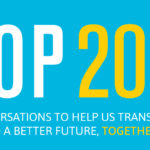Last week, Conscious Capitalism International, one of the foundational, thought-leading organizations in the conscious business movement, announced eight new board members. It’s hard not to notice that seven of the eight new appointees are men; the 21-person board now includes 18 men (15 of whom are white) and 3 women.
Compared to the organization’s past boards, the proportion of women and people of color represented is actually a step towards diversity and inclusion. I’m sure the new board members are skilled, qualified, and passionate additions to the organization’s leadership. And yet this is a disappointing missed opportunity for the organization to model how to operate in an awake, inclusive fashion.
As businesses, we serve diverse stakeholders — 70 percent of new workforce entrants in the next year will be women and people of color, for example. Creating teams that mirror that diversity isn’t just nice or a good thing to do. It’s smart, and it has a direct impact on the bottom line(s). It encourages innovation, creativity, and a deeper engagement with our customers, employees, and other stakeholders. It makes us get continually better at what we do.
Unfortunately, Conscious Capitalism is not alone its male-dominated board; nearly 75 percent of private tech companies have no women on their boards, and women hold roughly 25 percent of global board seats — a number that actually went down by two percent last year. Based on current trends, it will take 47 years for women to reach parity with men in corporate officer positions. Yet if we’re trying to create a new way of operating in business, we need to overcome the barriers to creating organizational boards that better reflect the diversity of our society as a whole — and we need to start at home, within the movement.
How to get more women on boards
Research reveals that there are a few reasons women have had obstacles in getting on boards:
1. The limited titles that qualify for board seats
Traditional board configurations that consist of sitting and former CEOs and CFOs severely limit the pool of qualified female candidates and contribute to a lingering misperception that the female executive talent pool is shallow.
Solution: Even as more and more women take on finance roles, board recruiters should broaden qualifying titles to include CMOs and CHROs — areas that are primarily populated by women.
2. Lack of motivation to change the status quo
The majority in power is often not motivated to resolve this issue. Many men don’t see a problem with gender imbalance in leadership, and men occupy 80–100 percent of decision-making seats on most boards. This is unconscious bias in action.
Solution: Educate men about unconscious bias, and get more women on boards and into leadership positions. Support high-potential women to step up, own their mics, and go after these positions. Organizations such as Watermark have been working for 25 years to educate, advocate, and connect women to such opportunities.
3. Narrow recruitment
Boards aren’t accessing diverse networks in the recruitment process; many boards that genuinely want to balance gender representation don’t have the tools and resources to do so.
Solution: Rather than turning to recommendations from your current, mainly white-male board (which history shows will result in appointing more white men), engage groups such as the theBoardList or the Athena Alliance to cast a wider net.
4. Lack of visibility of strong women leaders
Women executives aren’t always visible or aren’t visible in the right ways. They’re often viewed as the coffee-getter as opposed to the great-idea-generator, over-emotional rather than passionate, tactical rather than strategic, etc.
Solution: Shine a light on the women in your organization. Prioritize raising their visibility by making sure qualified female employees are leading key strategic efforts, speaking in public or otherwise, representing the company. Recognize solid ideas out loud, and if you notice a man try to hijack an idea suggested by a woman, say something.
Also make sure your company understands what the language of unconscious bias sounds like. Good intentions can result in big insults. Watch for comments with hidden criticisms, such as “You’re such a good mom, you always leave on time” (implying that she isn’t staying late with the rest of the team or isn’t pulling her weight).
5. Training/qualification mismatch
Women executives aren’t always qualified in the right ways, especially related to tenure or breadth of experience. For example, a candidate who has had nonprofit board experience but not public board experience.
Solution: Clarify expectations and broaden your perspective on the skills you need on your board. Of course, you need people with experience in governance and finance, but what about marketing and HR, or someone from a fast-growth company (instead of just thinking of large ones) or a different industry? Leveraging a broader set of skills could result in a greater pool of women (and more innovation). Organizations like the Athena Alliance also can help with board preparation.
The Bottom Line
Today’s business and social environment requires bold steps forward, especially for companies and organizations looking to change the paradigms of business. Let’s all learn what we must to do the hard work of moving our great intentions about a new way to leading into meaningful action.





